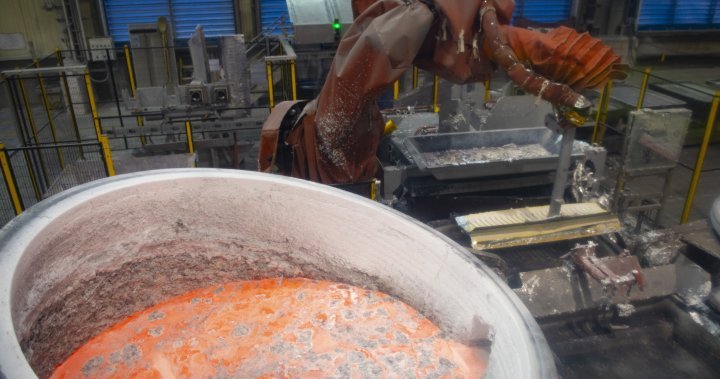The costs and chaos being caused by metal tariffs are starting to build up after a month in effect, and there’s little hope they’ll be removed in the foreseeable future.
U.S. President Donald Trump imposed 25 per cent tariffs on Canadian steel and aluminum on March 12, raising significant concerns for a sector that exported around $35 billion of metal to the U.S. last year.
It’s still not clear how much higher the tariffs will push consumer prices and translate into reduced demand, but industry insiders say the risks are building.
The aluminum tariffs alone add about $3,000 to the cost of an F150 truck, Aluminum Association of Canada CEO Jean Simard said. Add in the steel tariffs, and auto tariffs, and it means about $12,000 more in input costs.
“That’s destructive,” he said.
While Canadian aluminum producers have been able to pass on their higher costs, the tariffs now in place could mean reduced demand in the automotive and construction sectors that are the two biggest customers, Simard said.
“So there’s just that whole domino effect that comes into play, and we’re at the end of this.”
And while somewhat insulated so far, companies are taking a financial hit already.
Alcoa Corp. reported last week that its last quarter saw a US$20-million hit from tariffs, and that they could lead to a further US$90 million in additional costs in its second quarter.

Get breaking National news
For news impacting Canada and around the world, sign up for breaking news alerts delivered directly to you when they happen.
The Pittsburgh-based company, which is also one of Canada’s largest aluminum producers, says its customers paying more should offset some, but not all of those costs.
Canadian steel producers don’t have the same ability to pass on higher costs to U.S. customers, said Catherine Cobden, head of the Canadian Steel Producers Association, leading to a more immediate hit.
“We’re starting to see layoffs already, and we’re starting to see investment deferrals and we’re seeing production curtailments.”
The economics of steel shipping also makes it so diversifying trading partners isn’t such an option, and there’s also a global glut in the metal to compound the pressures, so companies are struggling with the uncertainty.
“There is a significant amount of chaotic activity as people are pivoting around supply chains,” said Cobden.
“The market signals are not great.”
Cobden and the association are pushing the Canadian government to put in border protections to help buffer Canadian producers from cheap imports, so they can better weather the tariffs that don’t look to be short-term.
“How far layoffs go will directly depend on how much effort the government chooses to put into a new border measure to manage that situation.
While Trump has wavered on numerous categories of tariffs, such as auto duties that analysts say are unsustainable and the global reciprocal tariffs that he paused for 90 days shortly after announcing them on April 2, the metal ones could be a longer-term reality.
Stifel analyst Ian Gillies said in a note that if the tariffs “last a number of years” that a company like Algoma Steel Group Inc. could face liquidity risk. When the tariffs came in, he cut his price target for Algoma from $21 to $15.25.
However if tariffs were to be temporary, it could mean a significant rebound ahead, he said.
“We will be quick to reverse course on our target multiple if and when geopolitical risks subside.”
Andrew Pappas, head of asset-based lending for metals at BMO, said in an April 3 note that he doesn’t see a quick end to the metal tariffs.
“Our view is that the newly imposed metal tariffs on Canada and Mexico will remain in place and will expedite the reworking of the USMCA treaty.”
While Trump’s claimed aim with the tariffs is to boost domestic production, and has the support of U.S. metal industry groups, Alcoa chief executive William Oplinger raised doubts about the strategy on the company’s earnings call last Wednesday.
“It takes many years to build a new smelter, and at least five to six smelters would be required to address the U.S. demand for primary aluminum.”
Those smelters would also require the energy equivalent of almost seven new nuclear reactors, he said.
“Until additional smelting capacity is built in the U.S., the most efficient aluminum supply chain is Canadian aluminum going into the U.S.”
© 2025 The Canadian Press
Read the full article here
